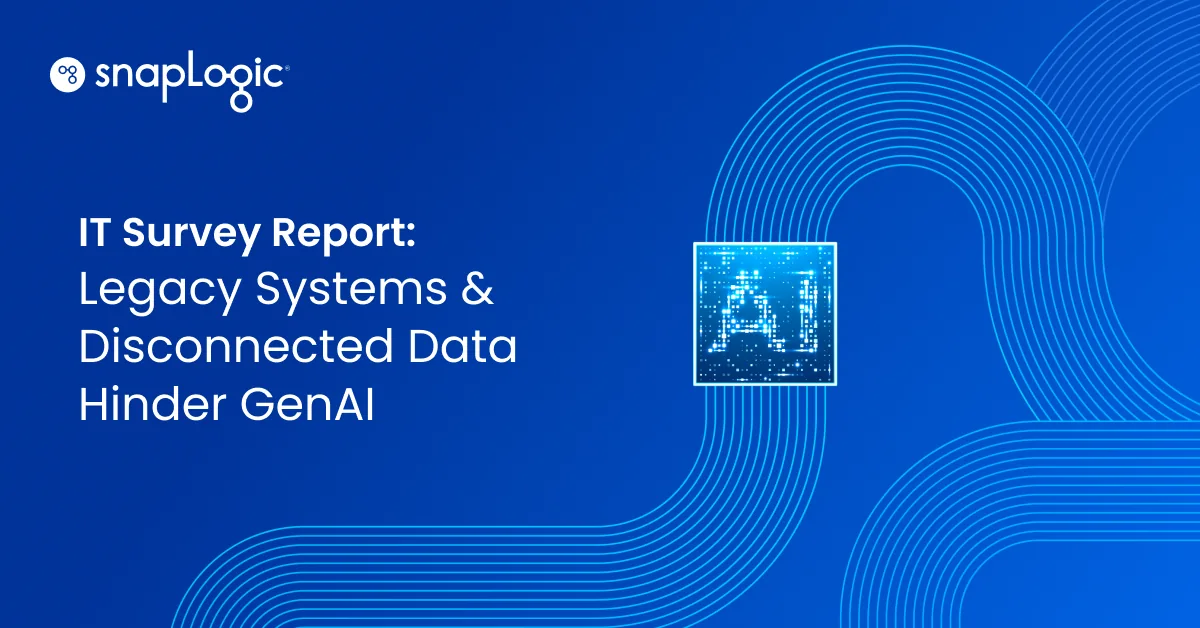In an era of nonstop digital progression, it’s easy for organizations to look past the pitfalls of legacy system maintenance just to keep pace. But as IT infrastructures become more intricately woven into the broad fabric of a business, companies often neglect the lurking saboteur within their ranks. Aging platforms can become ticking time bombs, and postponing their overhaul can lead to severe repercussions.
Change is tough but necessary for advancement
Turning to industry veterans committed to achieving successful digital transformations, we hosted a webinar with leaders from SnapLogic and EXL for a conversation about the importance of strategic prioritization in digital advancements.
The discussion focused on how legacy architecture can be an Achilles’ heel for businesses that avoid or de-prioritize digital transformation — creating operational inefficiencies, compounding costs, and requiring ongoing maintenance and troubleshooting.
While integrating legacy systems with newer technologies is a challenge, the dangers posed by obsolete systems can significantly impede an organization from taking advantage of an increasingly digitized marketplace. Not to mention having the flexibility to adopt AI enhancements and stay competitive. By 2025, IDC predicts that artificial intelligence (AI) will be integrated into at least 90% of new enterprise applications.
Even though the path to modernization can be fraught with challenges, a methodical approach can mitigate most of these risks. Let’s take a look at some of the recommendations.
1. Understand the risks and costs
Let’s consider a revealing statistic. Presenters shared that a staggering 70% of digital transformations fail, and it’s predicted that number may raise to an 80% failure rate by 2025. With these types of predictions, the idea of embarking on a digital transformation voyage may not seem worth it.
However, digital transformation isn’t going anywhere. Another analyst forecasts that 2027 may witness staggering worldwide spending worth $4 trillion on just such initiatives. It’s important to understand what’s at stake and balance it with the risks of inaction.
2. Define priorities and ensure stakeholder alignment
The most overlooked aspect is often the lack of clear alignment with key stakeholders. Presenters shared stories of experiences where companies failed to accelerate their digital transformation. The underlying issues in all these stories were a lack of clarity and urgency, and ineffective prioritization.
One key to preemptively mitigating pitfalls is to prepare a strong business case, backed by a detailed migration plan:
- Provide accurate estimates and consider both the business and technical drivers involved
- Establish clear communication channels and include all relevant departments in the planning and execution
- Use a project management framework to track progress, resolve any issues, and ensure the timely completion of tasks

3. Balance business continuity and innovation
Many businesses are conflicted between maintaining business flow and adopting new tech developments. A well-defined plan can push for an innovation-friendly work environment while ensuring minimal disruptions to business operations. A proper balance can be maintained with these steps:
- Understand the business value and objective of the migration
- Document and communicate these objectives clearly to stakeholders
- Lay a transition plan that includes contingency planning
4. Approach migration with strategic expertise
There are a couple of well-known data migration approaches, each with their own implications.
The “lift and shift” method involves moving data and applications to a new environment with minimal or no modifications. This approach can be faster, but could lead to inefficiencies and higher operational costs in the long term because legacy architectures are not modernized or optimized for cloud-native features.
The “convert and rearchitect” approach involves modifying or redesigning the application to better fit the new environment, often a cloud-based or more modern infrastructure. This is a more complex and time-consuming process that requires significant planning, dev, and testing, but is a future-proofing solution that prepares companies to take full advantage of cloud features and security.
Both methods call for design expertise and validation. Fine-tuning tools to align with modern practices presents an opportunity to upgrade the data platform and data engineering tooling. while using available accelerators and templates can greatly support migration efforts in the short term.
5. Validate risk and readiness
A validation step is crucial in identifying risks and issues in advance, including security and access controls. Taking these precautionary measures can prevent unforeseen problems down the line that could put your business operations or sensitive data at risk. All relevant departments must be onboarded into the process, and ensure that a project management framework can monitor progress at each critical step.
How to beat the odds
The common thread running through the discussion is the concept of planning. Thoughtful planning that is risk-aware, inclusive, and methodical.
We may not be able to entirely avoid failures in digital transformation, but being cognizant of the potential challenges, understanding migration strategies, and utilizing appropriate resources can significantly increase the chances of success. The future belongs to businesses that are willing to adapt, transform and continuously innovate.
Hear the full discussion in Hidden Risks: The Price of Postponing Your Legacy System Overhaul









